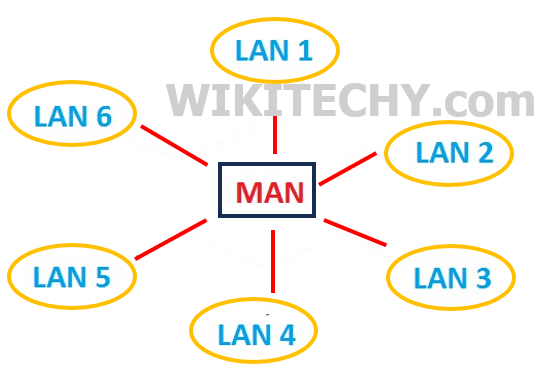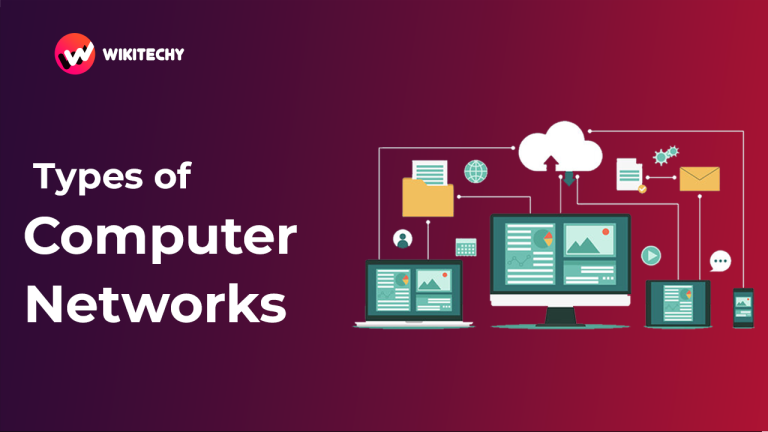Computer networks are integral to modern communication and information sharing. They enable devices to connect and interact, facilitating everything from personal communication to global data exchanges. Networks vary in size, scope, and complexity.

Local Area Network (LAN)

- A Local Area Network (LAN) is a network that connects devices within a limited area such as a home, office, or building. LANs are typically used to share resources like printers, files, and internet connections among multiple devices.
Characteristics
- Limited geographic range (usually within a single building or campus)
- High data transfer rates (typically up to 1 Gbps or more)
- Low latency
Uses
- Office environments for employee connectivity
- Home networks for connecting personal devices
- Educational institutions for connecting computers in labs and classrooms
Wide Area Network (WAN)

- A Wide Area Network (WAN) spans a large geographic area, often covering cities, countries, or even continents. The internet is the most extensive example of a WAN, connecting millions of LANs worldwide.
Characteristics:
- Large geographic coverage
- Slower data transfer rates compared to LANs (varies widely based on the infrastructure)
- Higher latency due to longer distances
Uses
- Connecting branch offices of a corporation across different locations
- Providing internet connectivity to users globally
- Enabling long-distance communication and data sharing
Metropolitan Area Network (MAN)

A Metropolitan Area Network (MAN) is a network that covers a larger geographic area than a LAN but smaller than a WAN, typically a city or a large campus.
Characteristics
- Coverage of a city or metropolitan area
- Intermediate data transfer rates (higher than WAN but lower than LAN)
- Can be public or private
Uses
- Connecting multiple campuses of a university within a city
- Municipal networks providing internet connectivity to residents
- Corporate networks connecting different branches within a city
Personal Area Network (PAN)

A Personal Area Network (PAN) is a small network designed for personal use, typically covering a range of a few meters. It connects personal devices such as smartphones, tablets, and laptops.
Characteristics
- Very limited range (up to 10 meters)
- Low data transfer rates (sufficient for personal device communication)
- Can be wired (e.g., USB) or wireless (e.g., Bluetooth)
Uses
- Connecting a smartphone to a wireless headset
- Synchronizing data between a laptop and a smartphone
- Connecting wearable devices to a mobile phone
Campus Area Network (CAN)

- A Campus Area Network (CAN) is a network that connects multiple LANs within a limited geographic area, such as a university campus or a business park.
Characteristics
- Covers multiple buildings within a specific area
- Higher data transfer rates than WANs
- Often managed by a single organization
Uses
- Universities connecting different academic buildings
- Industrial complexes linking various facilities
- Corporate campuses providing network access across different office buildings
Virtual Private Network (VPN)

A Virtual Private Network (VPN) extends a private network across a public network, allowing users to send and receive data as if their devices were directly connected to the private network.
Characteristics:
- Encrypts data to ensure secure communication over public networks
- Can be used over any internet connection
- Provides remote access to private networks
Uses:
- Remote workers accessing a corporate network securely
- Users accessing region-restricted services
- Enhancing online privacy and security
Storage Area Network (SAN)

A Storage Area Network (SAN) is a specialized high-speed network that provides access to consolidated, block-level data storage. SANs are used primarily to enhance storage devices’ accessibility to servers.
Characteristics:
- High data transfer rates optimized for storage operations
- Connects servers to storage devices
- Provides centralized storage management
Uses
- Data centers requiring high-speed storage access
- Enterprises managing large-scale databases
- Environments demanding high availability and performance of storage systems


